- Chuck's Stroke Warriors Newsletter
- Posts
- Issue #105: Reclaim Your Strength: Simple Routines for Stroke Survivors
Issue #105: Reclaim Your Strength: Simple Routines for Stroke Survivors
Small Moves That Spark Big Recovery Wins
Worried You’ll Never Feel Like Yourself After a Stroke?
Stroke recovery is tough. Your body feels foreign. Your confidence is shaky. You’re scared you’ll never feel strong or independent again.
Every day brings new frustrations. Maybe you can’t walk like you used to or hold a fork steady. The fear of another stroke haunts you. You feel isolated, like nobody understands. It’s tempting to give up when progress feels so far away. What if this is as good as it gets?
You’re not defeated—you’re a warrior in the making. Unlock Your Inner Warrior: Simple Habits for a Stronger Stroke Recovery offers easy, effective habits to rebuild your strength. Start with a two-minute stretch or a daily affirmation to spark hope. Eat brain-healing foods like berries or salmon. Connect with a friend or support group to lift your spirits. These small steps add up, helping you regain control and confidence. Your comeback starts now!
👉 Read this week’s newsletter to get expert advice and real-life strategies that work.
👉 Don’t miss a single issue — subscribe now and join a community that supports your journey!
Updates and Recent Developments in Stroke Recovery
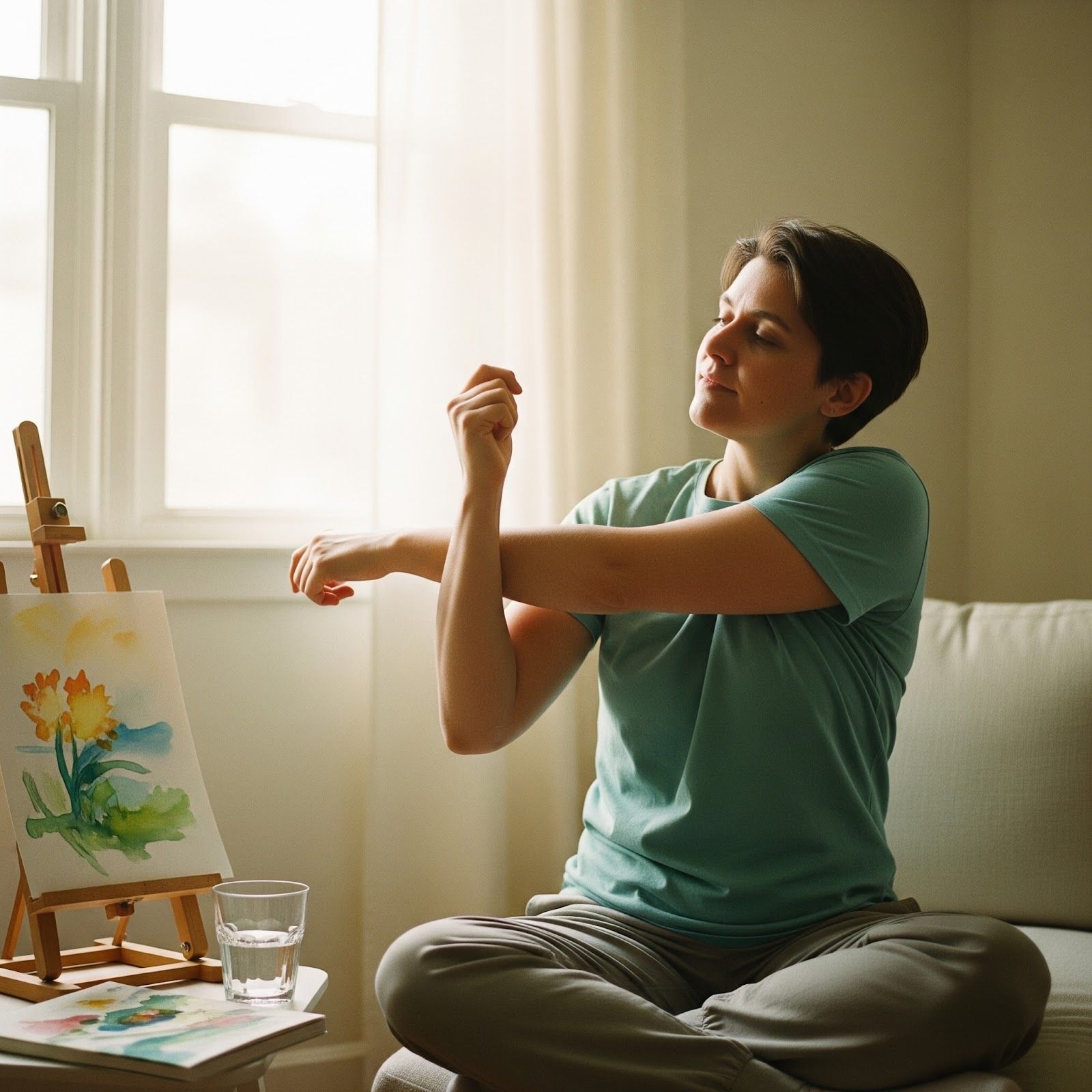
Unlock Your Inner Warrior: Simple Habits for a Stronger Stroke Recovery
Unlock Your Inner Warrior: Simple Habits for a Stronger Stroke Recovery
Building a Routine for Progress
Life after a stroke comes with daily challenges, but you have more strength than you think. Taking charge starts with simple habits, done consistently. Even modest improvements add up, fueling your confidence and independence.
Try to set a regular schedule for small exercises, self-care, and healthy meals. Routine creates a sense of purpose and helps you notice progress, even when changes feel slow[1][2].
Nourish Body and Mind
Eating well is a key part of healing. Foods rich in antioxidants, omega-3s, and vitamins—like salmon, nuts, seeds, avocados, and bright fruits—support your brain’s ability to rewire and repair itself. Even one healthy swap a day can make a difference. Research shows a diet high in these foods may lower your risk of another stroke and boost recovery[3][4].
Hydration matters, too. Sip water throughout the day to help your body and mind stay sharp.
Move With Purpose
If exercise sounds overwhelming, start small. Short walks around your home, practicing standing up and sitting down, or using your affected hand for daily tasks all help rebuild strength. Aim for about an hour total of activity each day—or break it into shorter sessions if you tire easily[1][5]. Consistency matters more than intensity.
Use a mirror to check your form and ensure safety. Ask for help when needed.
Mindset and Motivation
Recovery takes time, and progress might stall sometimes. Don’t get discouraged! Even professional therapists agree: focusing on just 1% improvement each day is powerful. Celebrate each step, no matter how small[4][2].
Set clear, achievable goals with your therapist. Reward yourself for milestones, and remember—motivation often grows once you start a routine.
Actionable Takeaway
Pick one new habit this week—an extra serving of brain-friendly food, a short daily walk, or a few minutes practicing a home exercise. Stick with it for a week and notice how you feel.
Quick Resources for More Support
Flint Rehab: 25 Stroke Recovery Tips and Free Exercise Guide[4]
Bancroft NeuroRehab: Home Therapy Made Simple Tips[1]
Foods That Help Stroke Recovery: Evidence-Backed Options[3]
Saebo: How to Stay Motivated During Stroke Recovery[2]
Every effort counts. You’re not alone—your inner warrior is always growing stronger.
Thoughts and Insights:
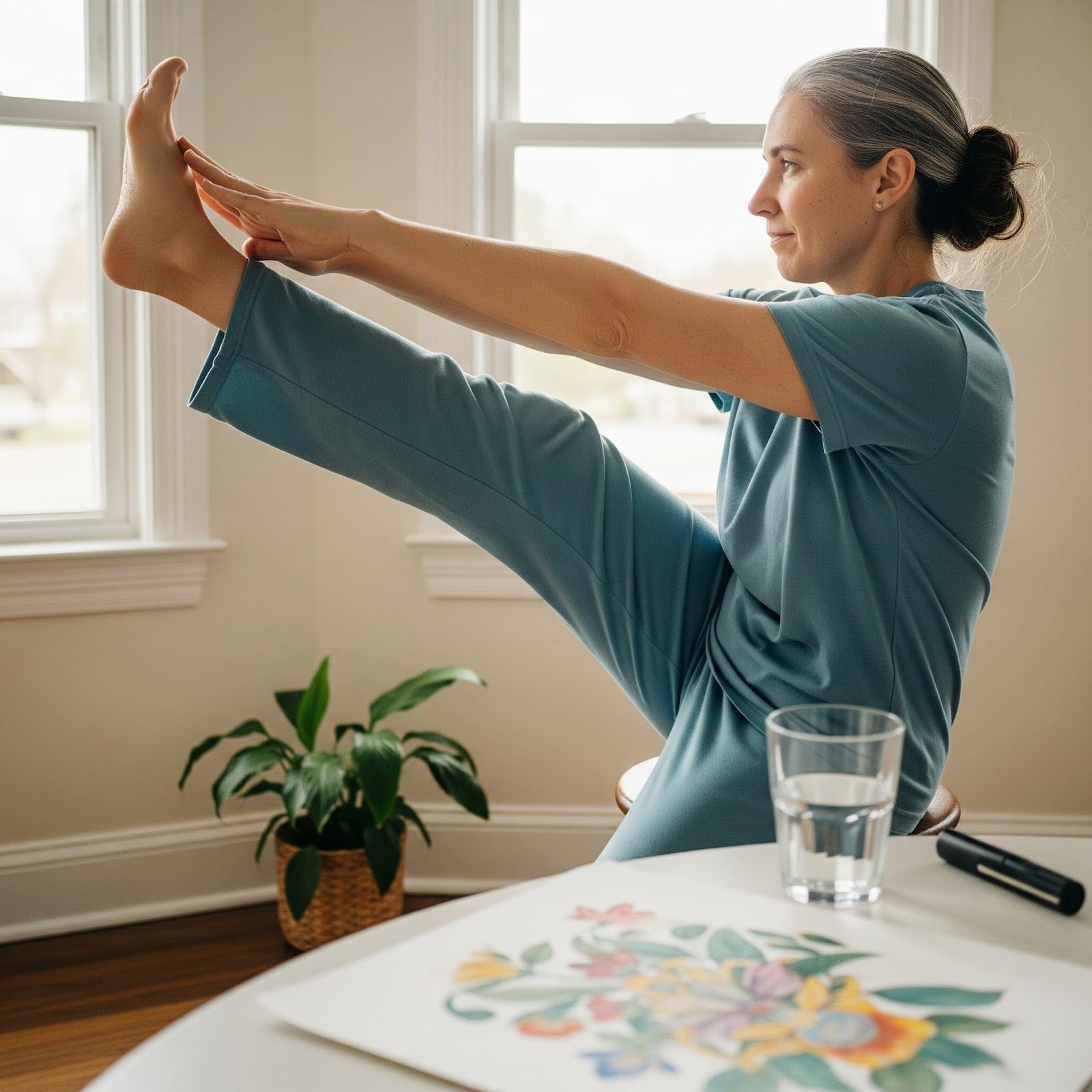
Unlock Your Inner Warrior: Simple Habits for a Stronger Stroke Recovery Journey
Unlock Your Inner Warrior: Simple Habits for a Stronger Stroke Recovery Journey
Introduction
Recovering from a stroke can feel like waking up in a different world. Your body doesn’t move the way it used to. Your thoughts might come slower. And emotionally? It’s a rollercoaster. But here’s the truth: you are not broken—you are becoming.
Inside you is a fighter, a doer, a resilient soul ready to take one small step forward each day. And this article is your roadmap to do just that.
Let’s break down how to Unlock Your Inner Warrior: Simple Habits for a Stronger Stroke Recovery—without burnout, shame, or overwhelm.
Why Mindset Is Your Greatest Weapon
Train Your Brain to Think Like a Warrior
Stroke recovery isn’t just physical—it’s deeply mental. To make progress, you’ll need more than exercises and meds. You’ll need grit.
What Is the "Inner Warrior"?
Someone who shows up, even when it’s hard
Someone who celebrates effort, not just outcome
Someone who gets knocked down—and gets back up again
Daily Mental Habit: Warrior Affirmation
Each morning, say this out loud: “I am strong. I am healing. I am a warrior.” It may feel strange at first—but over time, your brain begins to believe it.
Movement Is Medicine (And You’re the Pharmacist)
Start Small. Stay Consistent. Grow Confident.
Movement reconnects the dots between your brain and your body. And guess what? It doesn’t have to be intense to be effective.
Try These Gentle Warrior Moves:
Seated Marching – While sitting, lift your knees one at a time.
Wrist Rolls – Loosens stiffness and improves circulation.
Wall Push-Ups – Great for upper body strength and balance.
Standing Balance (with Support) – Stand for 10 seconds, using a chair.
How to Turn Movement Into a Daily Habit
Pair it with something you already do (like brushing your teeth).
Keep it short—just 2–5 minutes is better than none.
Track it with a simple checkmark calendar or phone reminder.
Eat Like a Warrior: Nutrition That Heals
Fuel Your Body and Rebuild Your Brain
Nutrition plays a powerful role in stroke recovery. You don’t need a perfect diet—but small shifts can speed healing and boost energy.
Top Brain-Boosting Foods for Recovery:
Berries – Antioxidants that help with brain repair
Salmon or Walnuts – Omega-3s for neuroprotection
Leafy Greens – Loaded with vitamins and anti-inflammatory compounds
Whole Grains – Fuel your brain with steady energy
Water – Hydration keeps your mind clear
Warrior Habit: The Recovery Smoothie
Blend together:
1 banana
1 cup spinach
½ cup berries
1 tablespoon flaxseed
Unsweetened almond milk
Drink it in the morning and you’ve already won the day.
Rest Is Part of the Plan—Not a Pause Button
Sleep and Mental Recharge Are Critical
Your brain does serious repair work while you’re sleeping. So don’t treat rest as optional—it’s recovery in action.
Evening Habits That Improve Sleep Quality:
No screens an hour before bed
Use a calming scent like lavender
Play relaxing music or guided meditation
Stick to a consistent bedtime, even on weekends
Warrior Tip: Create a Pre-Sleep Ritual
Try this every night:
Warm tea
Gentle breathing exercise
5 minutes of gratitude journaling
Your brain will learn it’s time to shut down and heal.
Don’t Go It Alone: Connection Makes You Stronger
Isolation Is the Enemy—Connection Is the Cure
Stroke recovery can feel lonely, especially when your old routines change. But you’re not meant to fight this battle solo.
Simple Ways to Reconnect:
Text a friend once a day
Join a stroke survivor support group (online counts!)
Schedule weekly video or phone check-ins with family
Share your goals with your caregiver—they’re your teammate
Warrior Habit: Daily Connection Challenge
Pick one person a day and reach out—even just a smile emoji or voice note counts.
Build a “Warrior Day” Routine That Works for You
You Don’t Need to Be Perfect—Just Consistent
Here’s a sample day that’s designed for real-life recovery. You can tweak it based on your energy level and medical needs.
Sample Warrior Routine
Time | Activity | Warrior Benefit |
|---|---|---|
Morning | Warrior mantra + movement stretch | Activates brain-body coordination |
Breakfast | Recovery smoothie | Brain fuel + hydration |
Mid-morning | Brain puzzle (crossword, memory game) | Mental stimulation |
Afternoon | 5-minute stretch or walk (with support) | Improves circulation + mobility |
Evening | Text or call someone | Boosts emotional well-being |
Bedtime | Guided meditation + no screens | Enhances sleep + overnight healing |
Frequently Asked Questions (FAQs)
Q: What if I can’t do some of these habits?
A: Modify them! Can’t walk? Try chair exercises. Can’t cook? Ask for help with smoothies or use delivery services. There’s always an accessible version.
Q: What if I miss a day (or week)?
A: You’re human. Life happens. Progress isn’t erased by rest. Pick one small action and start fresh—today counts.
Q: Can caregivers benefit from these tips?
A: Absolutely. Caregivers are warriors too. These habits improve mood, resilience, and help build trust between survivor and supporter.
Q: How long until I see results?
A: It varies. Most survivors see subtle changes in weeks, but the biggest gains often appear after consistent practice over months.
Reclaim Your Strength: The Warrior Is Already in You
You Don’t Need to Find Strength—You Already Have It
The journey through stroke recovery is long, winding, and sometimes frustrating. But within you is a quiet power—something deeper than motivation. It’s your warrior spirit, and it’s stronger than any setback.
Keep stacking those small wins. Keep whispering your morning mantra. Keep drinking that weird green smoothie. Because every little habit is a brick in your comeback castle.
And don’t forget the title of this journey:
Unlock Your Inner Warrior: Simple Habits for a Stronger Stroke Recovery
Say it. Believe it. Live it.
Final Thoughts: Progress, Not Perfection
Recovery isn’t a finish line. It’s a lifestyle. You’ll have days when you feel on top of the world and days when even getting out of bed feels like a battle. That’s normal.
But here’s the secret: by building these simple habits, you’re stacking up evidence that you’re healing—even when it doesn’t look obvious.
So breathe deep, smile when you can, rest when you need to, and above all:
Keep showing up.
Because warriors don’t always win the first fight—but they never stop showing up for the next one.
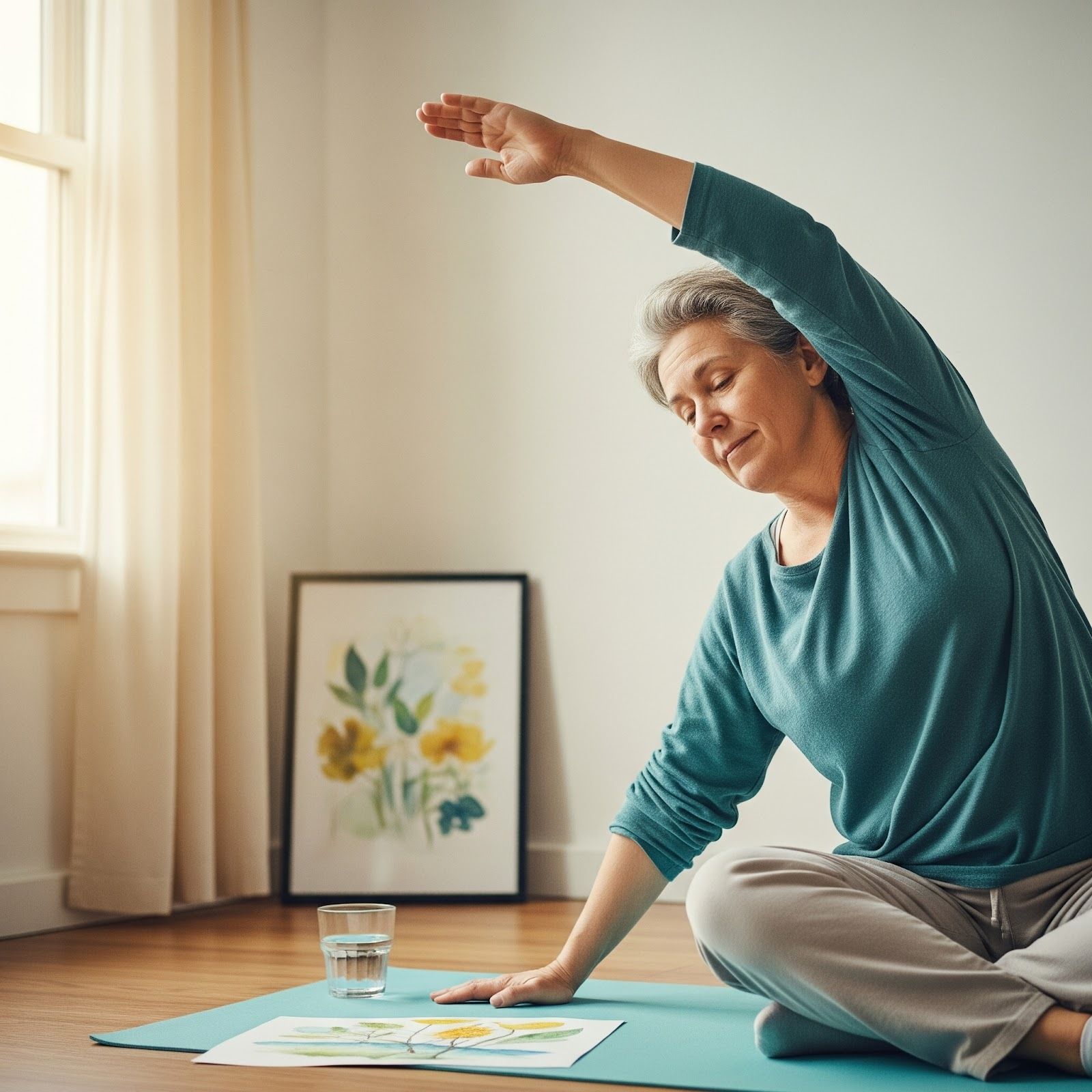
Navigating Life After Stroke
Unlock Your Inner Warrior: Simple Habits for a Stronger Stroke Recovery
Stroke recovery is a tough but empowering journey. By embracing tools and mindsets that help you unlock your inner warrior, you can navigate daily challenges with more ease and hope. This guide offers practical, heartfelt advice for stroke survivors, focusing on adaptive equipment to simplify tasks and emotional strategies to keep you strong. Let’s explore actionable tips to support your recovery.
Adaptive Tools & Equipment
The right tools can make daily life feel more manageable and help you regain independence. Here are four practical options to support your journey.
Grab Bars for Safety
What they are: Sturdy bars installed in bathrooms or near stairs for support.
Why they help: They prevent falls, especially if balance or leg strength is limited.
How to use them: Place grab bars near the toilet, shower, or bed. Suction-cup models work well for renters or travel.
Adaptive Utensils for Eating
What they are: Forks, spoons, or knives with thick, weighted, or angled handles.
Why they help: They make eating easier if hand strength or coordination is a challenge.
How to use them: Choose utensils with foam grips and pair with non-slip plates for stress-free meals.
Reacher Tool for Accessibility
What it is: A lightweight stick with a gripper to pick up items from high or low places.
Why it helps: It reduces bending or stretching, which can be tough with limited mobility.
How to use it: Keep a reacher in key spots like the kitchen or bedroom to grab lightweight items like clothes.
Voice-Activated Assistants
What they are: Devices like Amazon Echo that respond to voice commands.
Why they help: They simplify tasks like setting medication reminders or calling for help.
How to use them: Program simple commands, like “set a timer for my pills” or “call my caregiver.”
Emotional Coping Strategies
Recovery challenges your heart as much as your body. These strategies can help you unlock your inner warrior and stay resilient through the ups and downs.
Celebrate Small Wins
Why it matters: Small steps add up, even when progress feels slow.
How to do it: Write down one daily win, like holding a cup steady or walking a few extra steps. Review weekly to see your growth.
Example: “I buttoned my shirt today—that’s a big deal!”
Join a Support Group
Why it matters: Connecting with others who understand reduces loneliness.
How to do it: Find an online or local stroke survivor group. Share one challenge or success per meeting to build bonds.
Example: One survivor found comfort in a virtual group after feeling isolated from friends.
Practice Kind Self-Talk
Why it matters: Gentle words to yourself boost resilience against frustration.
How to do it: When you feel stuck, say, “I’m trying, and that’s enough.” Repeat until it sinks in.
Example: After a tough therapy day, remind yourself, “I showed up, and that’s strength.”
Set One Small Daily Goal
Why it matters: Tiny goals keep you motivated without overwhelming you.
How to do it: Pick one task, like stretching for 5 minutes or calling a friend, and check it off.
Example: A survivor started with 3-minute stretches, which grew into a 10-minute routine.
Visualize a Brighter Future
Why it matters: Imagining positive moments fuels hope and focus.
How to do it: Spend 2–3 minutes picturing a goal, like walking confidently or enjoying time with family.
Example: Picture yourself gardening again, feeling proud of your progress.
You’ve Got This, Warrior
Every step in your recovery is proof of your strength. With tools like grab bars or adaptive utensils, daily tasks can feel more doable. Combine that with emotional strategies like celebrating wins or connecting with others, and you’ll keep unlocking your inner warrior. You’re not alone on this path—keep pushing forward, and know that every small victory is a reason to be proud.
Silly Humor
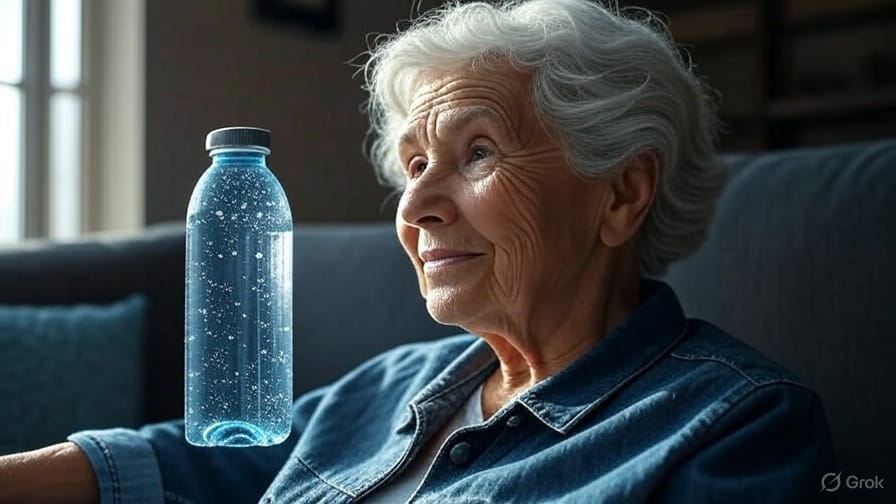
“I’m basically a hydration hero now!”
💪 Unleashing Your Inner Warrior
Why did the stroke survivor call their recovery routine a "warrior workout"?
Because every step was a battle won!
Last month, I decided to make drinking water a habit. I told my caregiver, “I’m basically a hydration hero now!” She laughed and handed me a sparkly water bottle, saying, “Every sip fuels your inner warrior.” It’s funny how small wins feel so epic.
Cartoon Caption Idea: “My morning stretch? Unlocking my inner warrior, one yawn at a time!”
Keep shining, warrior—every habit you build is a victory in your comeback story.

Unlock Your Inner Warrior: Simple Habits for a Stronger Stroke Recovery
Unlock Your Inner Warrior: Simple Habits for a Stronger Stroke Recovery
Easy Ways to Build Your Recovery Strength
There’s a warrior inside every stroke survivor—and you can unlock yours by building new habits that boost your recovery every day. Here are some standout, free resources to help you on your journey:
1. 25 Stroke Recovery Tips for Healing, Habits, & Happiness
What you’ll find: Clear, practical tips for healing physically and mentally after a stroke. This article covers smart nutrition choices, setting easy-to-track goals, and ways to turn small wins into big gains.
Why it’s valuable: The tips are simple to add to your daily life and backed by science. You’ll also find motivational advice for staying on track, even when recovery feels slow. There's a bonus: you can download a free PDF of stroke exercises to use at home[1].
2. 7 Actionable Stroke Recovery Daily Living Tips
What you’ll find: Real-life, everyday strategies. Topics include self-care, healthy eating, posture, simple aerobic exercises, stress management, and more.
Why it’s valuable: These aren't just “suggestions.” Each tip is practical, easy to follow, and designed for life after stroke. There’s guidance on how to ask for help when you need it (a true sign of strength!), and reminders that small changes can make a big difference in how you feel and function[2].
3. Stroke Recovery Stories: Get Inspired to Keep Going
What you’ll find: Uplifting stories from survivors. See how others kept moving forward—how they broke through tough plateaus, overcame setbacks, and celebrated milestones with family support.
Why it’s valuable: If you need a pick-me-up or proof you’re not alone, these stories hit the mark. You’ll see how building new habits—one day at a time—truly helps unlock your inner warrior, no matter where you are on your recovery path[3].
4. Staying Motivated During Stroke Rehabilitation – Kevin’s Story (Video)
What you’ll find: A short video following Kevin’s rehab journey, focusing on perseverance, small victories, and pushing your own limits.
Why it’s valuable: Sometimes you just need to see it to believe it. Watching Kevin and his therapist celebrate progress—even tiny steps—will encourage you to keep challenging yourself, one day at a time[4].
Remember, your progress matters—every small habit and positive step adds up. Lean on these resources whenever you need a boost or a game plan for the next leg of your journey.
AI-Generated Writing and Art
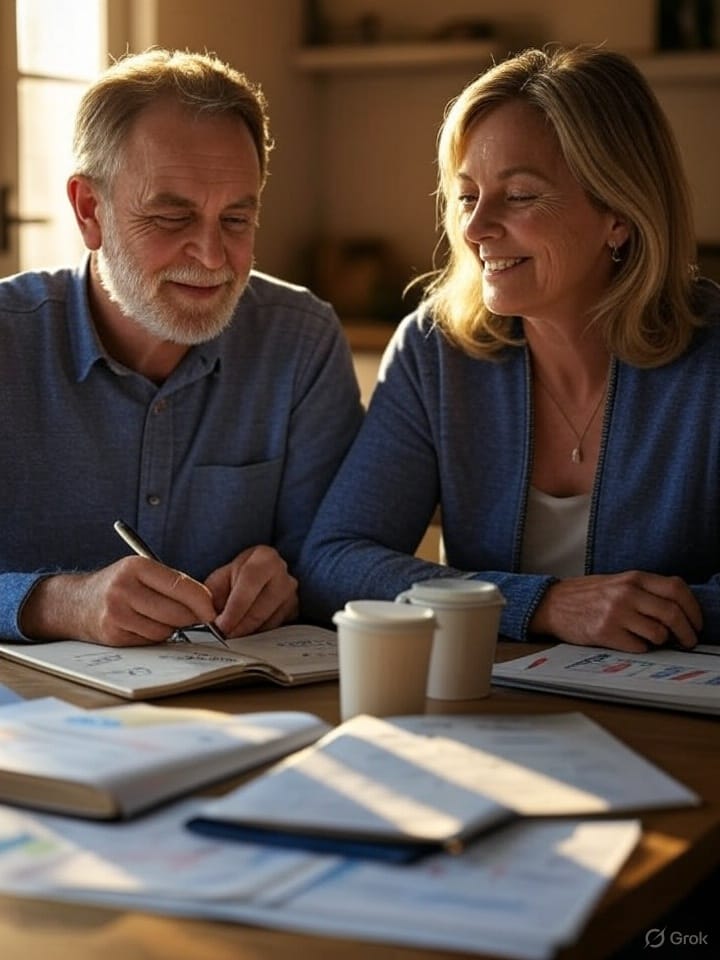
The Phoenix Protocol
Meet Luke the Stroke Warrior, a retired engineer who discovered that rebuilding his life after stroke required the same methodical approach he once used to build bridges—one carefully planned system at a time, with his devoted wife Abby as his most trusted project partner.
The Phoenix Protocol
Luke's pen hovered over the blank page, his left hand betraying him with another tremor. Damn it. Three months since the stroke, and even holding a pen felt like rocket science. The morning sun caught the dust swirling through their kitchen—chaotic little particles with no plan, just like him.
"Whatcha doing, hon?" Abby set down his coffee, the one with the ridiculous foam handle that screamed disabled person lives here.
"Trying to think like an engineer again," Luke muttered, then looked up at her tired eyes. "Sorry. I mean... I had an idea."
She settled beside him, close enough that he caught her familiar lavender scent. "Tell me."
"Forty years building bridges, and I never had one collapse because we rushed the foundation." His voice was slower now, more deliberate, but clearer than last month. "Maybe recovery works the same way."
"Meaning?"
Luke wrote "PHOENIX PROTOCOL" across the top, letters shaky but determined. "Systems. Small ones. Like..." He drew a wobbly flowchart. "Coffee, pills, move around, eat. Same order every day."
"That's it?" Abby tried to hide her skepticism.
"You start with what you can control."
Two weeks in, their kitchen table looked like NASA's launch center. Luke's notebook filled with entries: Buttoned shirt—4 minutes (personal record!). Fell during tooth brushing—note: install grab bar.
"This is working," Abby said one morning, watching him pour coffee with only minor spillage.
"Version 2.0 of morning protocols," Luke grinned, making a note. "Fewer catastrophic failures."
But week four nearly broke him. The afternoon crashes hit like clockwork—exhaustion so complete he couldn't lift his head from the couch. He marked it in angry red ink: SYSTEM FAILURE.
"Maybe that's not a failure," Abby said gently, studying his frustrated scribbles.
"Feels like one."
"In engineering, what do you call information about how something's performing?"
Luke paused. "Feedback."
"So your body's giving you data."
That afternoon, they built their first "reset protocol"—fifteen minutes of stretching, breathing, and Luke grudgingly writing three things he was grateful for. He titled it "System Refresh 1.0."
"You know what I love about this?" Abby said weeks later, reviewing their charts. "We're not just getting through days anymore."
"We're engineering them," Luke finished, then took her hand. Both hands. Something impossible three months ago. "I couldn't do this alone."
"You're not alone. We're co-engineers on this project."
Luke flipped to their three-month summary. "Seventeen iterations, twelve major optimizations, zero days abandoned."
Abby leaned over and wrote in the margin: "Most importantly: We built something beautiful from something broken."
"Ready for Version 4.0?" Luke asked.
"What's next?"
"I was thinking..." Luke's eyes lit up with the spark she'd fallen in love with forty years ago. "Dancing protocols?"
Abby laughed—the first real laugh she'd had in months. "Now that's our most ambitious project yet."
That's it for this week's newsletter, dear Stroke Warriors! Keep in mind,life doesn't stop after a stroke – it's an opportunity to embrace new experiences. Remember, you are not alone on this journey, you are strong, and together, we can overcome any challenge.. Embrace your rehabilitation with determination, and know that progress is within reach.
Disclaimers
Disclaimer:
The information provided in this newsletter is for general informational purposes only and is not intended to constitute professional advice.
Medical Disclaimer:
The content shared in this newsletter is not intended to be a substitute for professional medical advice.
Accuracy Disclaimer:
While we make every effort to provide accurate and up-to-date information, the content in this newsletter may contain errors, omissions, or inaccuracies.
We hope you found the information valuable and informative.
With the assistance of AI, I am able to enhance my writing capabilities and produce more refined content.
This newsletter is a work of creative AI, striving for the perfect blend of perplexity and burstiness. Enjoy!
🌟 Exciting News 🌟
We're thrilled to share that Chuck's journey doesn't stop here. If you're curious about the fascinating world of ChatGPT and artificial intelligence and AI's potential for learning and growth, be sure to check out our sister newsletter, "Chuck Learning ChatGPT"! Discover how Chuck is diving into the realms of AI, exploring innovative ideas, and sharing insights that could inspire new perspectives. To join Chuck on this exciting AI adventure, subscribe to "Chuck Learning ChatGPT:
📡 You’re bored of basic binge content.
🔍 Stories feel scripted—no mystery, no challenge.
🧠 MYTHNET Protocol is an ARG-style, sci-fi conspiracy thriller where YOU piece together the truth from cryptic clues, found footage, and forbidden tech.
✅ Hit play. Decode the myth. Join the protocol. Escape the ordinary.
🎥 Subscribe now.
Channel URL: https://www.youtube.com/@MYTHNET_Protocol
Stay curious, stay inspired, and keep embracing new possibilities with us\!
As always, if you have any feedback or suggestions, please don't hesitate to reach out to us. If you have a experience that you would like to share you can reach out to us here :
Keep an eye out for our next edition, where we will be sharing inspiring stories of triumph and resilience from our community.
Join the Journey of Hope: Subscribe to our free newsletter and be part of the incredible journey of hope as we share inspiring stories of stroke Warriors like Luke and their triumphs over adversity. Receive exclusive content and valuable insights into stroke recovery and caregiving, all delivered straight to your inbox.
Share the newsletter on your Social Media!
Join us in supporting the Chucks Stroke Warriors community with a newsletter sponsorship. Reach a targeted audience and promote your brand. Limited sponsorships are available, contact us for more information at:
Until next time!
Keep fighting and stay resilient!
With warm regards,
Chuck and the Stroke Warrior Team
P.S. If you missed last week's newsletter on “ Issue #104: Mind Over Stroke - Build Strength for Your Comeback” you can catch up here:
Reply